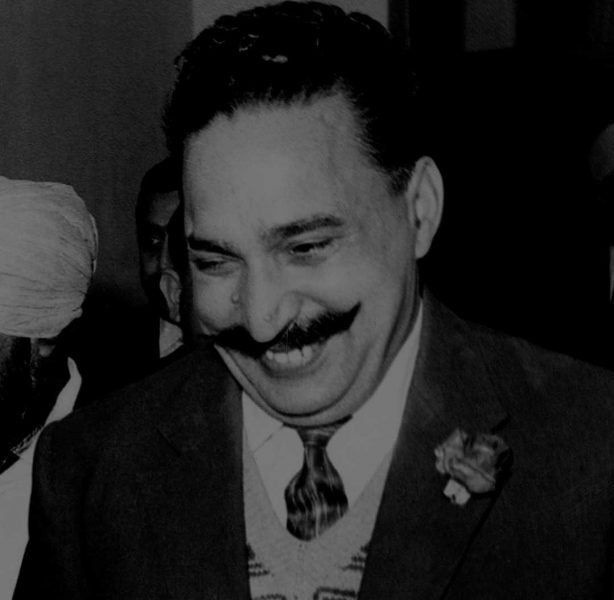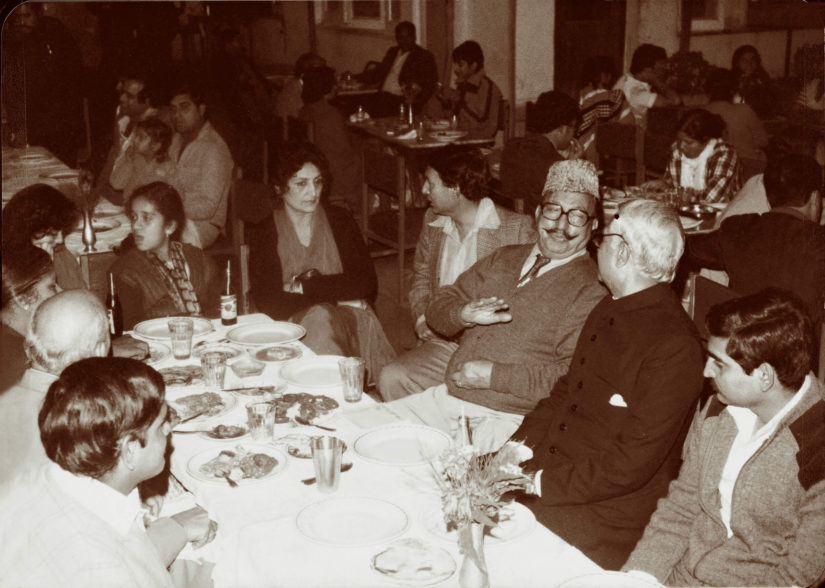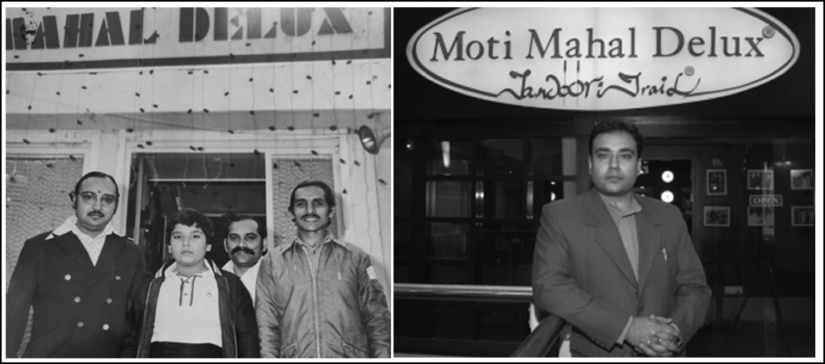

Kundan Lal’s Early Life:
The Partition of India in 1947 was followed by the Punjabi invasion of Delhi. While the Dilliwalas were paralyzed by the tragedy, the refugee Punjabis were galvanized into fighting for a new avatar and rolled up their sleeves to regain their economic dignity while refusing to accept their defeat.
One of these intrepid breeds to whom defeat was a dirty word was Kundan Lal Gujral. He was a Punjabi Pathaan from the North-West Frontier Province. Though Kundan`s father was a cloth merchant in Chawkal and owned a cloth shop in this district of Jhelum, young Kundan became a professional product of the capital city of Peshawar, where he got his first job. He was not even in his teens when he found himself in a position where he could exploit his resources. He began to work as an assistant in an eatery in the early 1900s. Later, under Kundan`s culinary excellence, the eatery graduated into a restaurant and Peshawar became the culinary home of the first MotiMahal. Within a few months, Gujral`s energetic salesmanship helped the MotiMahal break even. He soon carved out a personal niche for himself among the customers as he established a warm rapport with the local gentry.
Post-partition, in 1947, Kundan Lal Gujral travelled to Delhi with his family as refugees, where Kundan changed the face of Indian Cooking. Catering was his first love and was to be his last and the most fruitful one. The trail which began in Peshawar`s Gora Bazaar ended in Delhi’s then-liveliest intersection between old and new Delhi – Daryaganj. Kundan identified a small place on the roadside which later was granted to him by way of a Rehabilitation Conveyance Deed by the President of India, where Motimahal was re-established in independent India. Twenty-seven years later, having made a name for himself, he had landed in Delhi to start afresh. He had come armed with Oscar Wilde’s famous aphorism ‘to declare nothing but my genius‘.

Kundan Lal’s 6 P Formula for Success:
The first thing he did after setting up his shop in Daryaganj was to put into practice the six P’s of his formula to success. Kundan is remembered for pro-actively perfecting the following 6 essential attributes in his Daryaganj restaurant: Product Quality, Price, Promotion, Place, Personalized Service and most importantly, keeping the People content and satisfied.
Notably, Gujral with his lambswool cap, thickly twirling moustache, Pathani suit with a red rose adoring the lapel of his jacket and his welcoming grace in following the traditional Indian custom of bending low to greet his customers gave an added flavour to the MotiMahal Experience.
Kundan Lal’s Early Success:
In Peshawar, Kundan would regularly cater to the house of his friend, Meharchand Khanna, the political stalwart, who later became a minister in Nehru’s cabinet. It was Mr Khanna, who introduced Gujral’s famous tandoori chicken to Pandit Nehru post-partition and when Nehru enquired as to who the inventor was, Khanna produced Kundan Lal Gujral before him and the rest is as we say, History.
Thereafter, MotiMahal’s catering became a compulsion in Nehru’s banquets and political dinners. Moreover, MotiMahal became the only venue for dignitaries to sample the innovative Tandoori cuisine that was making its place on the world map and in people’s hearts. The list of dignitaries that visited MotiMahal went on to include Shah of Iran, USA President Richard Nixon, Jackeline Kennedy, Canadian Prime Minister Trudeau, The King of Nepal, Soviet Leaders Alexie Kosygin and Nikolai Bulganin, Pakistani Prime Minister Zulfikar Bhutto and many others. Impressively, Maulana Azad, the 1st Education Minister of India, summed it up beautifully: he exclaimed to the Shah of Iran that “Visiting Delhi and not eating at MotiMahal was like visiting Agra and not seeing the Taj Mahal.”

Kundan Lal’s Innovative Genius:
Kundan Lal is accredited with the creation of MotiMahal’s iconic dishes: The Tandoori Chicken, The Butter Chicken, The Dal Makhani and The Chicken Pakora.
The Tandoori Chicken: Kundan won over the gastronomic hearts of the people and gave the world a new delight – “The Tandoori Chicken”. He roasted the chicken in the mud-tandoor dug into the ground lit with coal and wood and produced culinary magic.
James Traub, the author of “India: The Challenge of Change”, on a visit to India in 1984, described the tandoori chicken with typical gourmet flourish: “It emerges in the best of all possible restaurants, light pink in the centre, crisp on the outside, slightly smoky though out and with a fine mist of sauce still clinging to the surface. It is pungent, with cumin and coriander, rather than hot with chilli. One should give in, after the first bite of Tandoori Chicken, to the sudden desire to weep; India is an emotional country after all.”
The Butter Chicken: Notably, all of Kundan Lal’s great ideas emerged out of necessity. When he began worrying about his cooked chickens drying out, he searched for a sauce with which he could rehydrate them. His solution was the “Makhani or Butter sauce” and it led to the creation of the – “Butter Chicken”, made from bits of tandoori chicken that were in danger of drying out.
The Chicken Pakora: Interestingly, one day a British dignitary visited MotiMahal with an Indian Cabinet Minister. The British dignitary asked Kundan Lal for fried chicken because he was craving his staple fish and chips from his home town in England. Kundan gracefully accepted the task and rushed into the kitchen. He took a “kadhai”, and added boned chicken and poured oil till the chicken was submerged in it. He deep fried the chicken and served it to the British dignitary after sprinkling his secret spice blends over it. What he produced before the dignitary is what we, now, call the Chicken Pakora.
The Dal Makhani: Once Kundan Lal was satisfied with the non-vegetarian offerings of his restaurant, he started searching for an iconic vegetarian dish.In those days, urad dal was not considered a great banqueting dish. Chana dal-was more respectable and in any case, caterers and restaurateurs were obsessed with so-called shahi dishes in which the gravy was enriched with cream. Kundan Lal invented the Dal Makhani out of a desire to create a shahi dal to go with the rich non-vegetarian food. Kundan Lal took the black dal of his ancestors and added his Makhani sauce to it and, thus, after the invention of Butter Chicken came, his next invention was, essentially, the Butter Dal or the “Dal Makhani”. Kundan intended The Butter Chicken and The Dal Makhani to be regarded as members of the same family of dishes.Once, Kundan added to his elegant menu a vegetarian speciality – “The Dal Makhani” – all Dilliwala’s visited MotiMahal with mouth-watering expectancy.
Notably, Manjit Gill, who is not only ITC’s corporate chef but is also extremely knowledgeable about the history of Indian cuisine, conceded that the modern Dal Makhani was invented by Kundan Lal Gujral in his MotiMahal restaurant in Daryaganj.

MotiMahal, Today:
My restaurant is my life ‘ said Kundan Lal Gujral towards the end of his great innings. It was to Gujral’s innovative genius that we can attribute the popular place that tandoori cuisine has acquired in Indian cookery. Kundan’s life and genius became a lesson well learnt for the family left behind, in particular, his grandson Monish Gujral, who had the opportunity to train under his legendary grand-father.
Monish Gujral, an Indian Express Columnist, Gourmet Award Winner, Cookbook Author and Celebrity Chef, is acclaimed for the trailblazing turn-around of MotiMahal, from being a small but iconic presence in Delhi to becoming a Multi-National Corporation, that is well on its way to defining how the world eats and appreciates Indian food and Tandoori Cuisine. Monish Gujral, the Managing Director of the MotiMahal, now carries the torch forward that was lit by his Grand Father a century ago. Today, MotiMahal boasts of being the largest franchise chain of restaurants of North Indian and Mughlai cuisine.